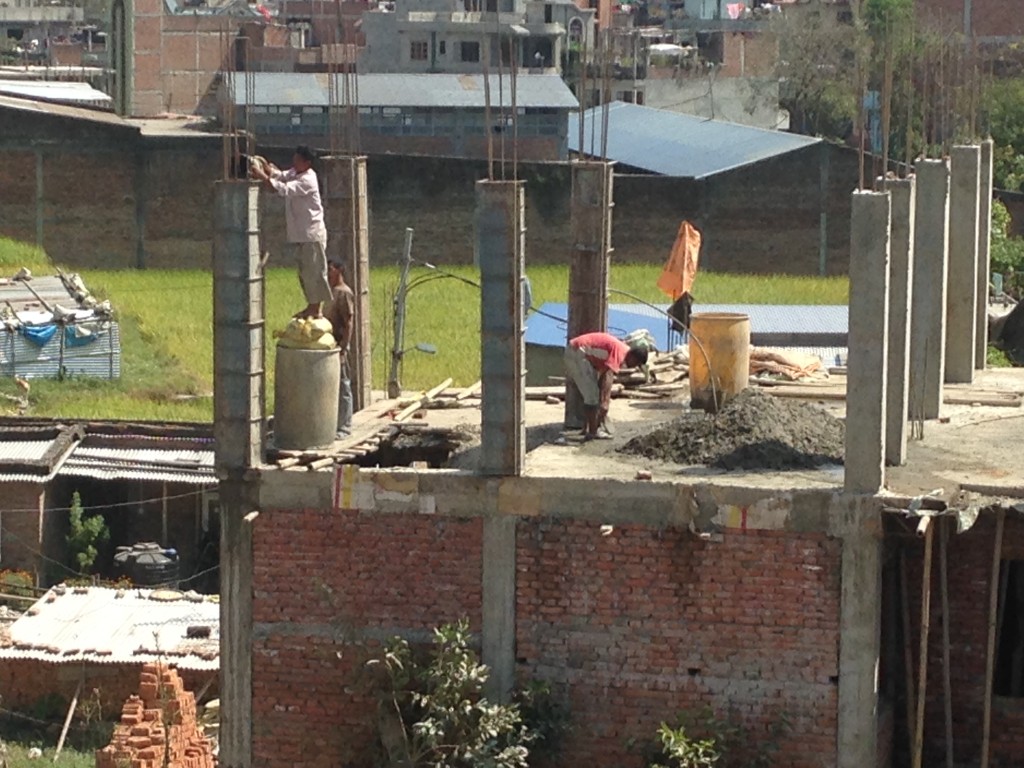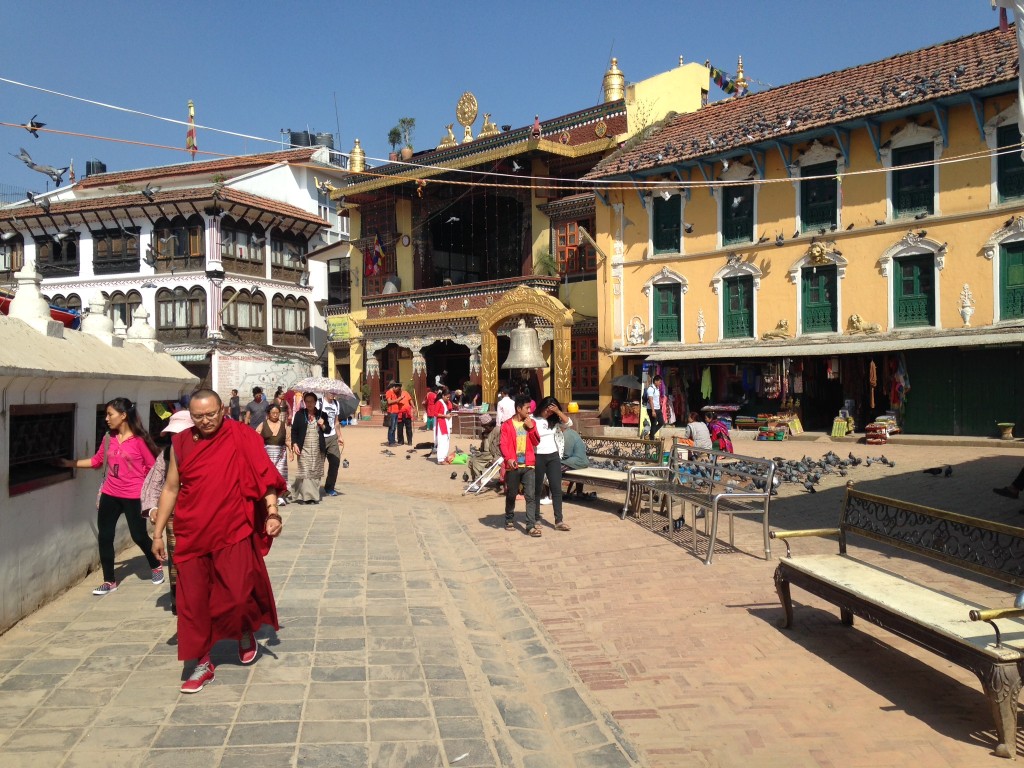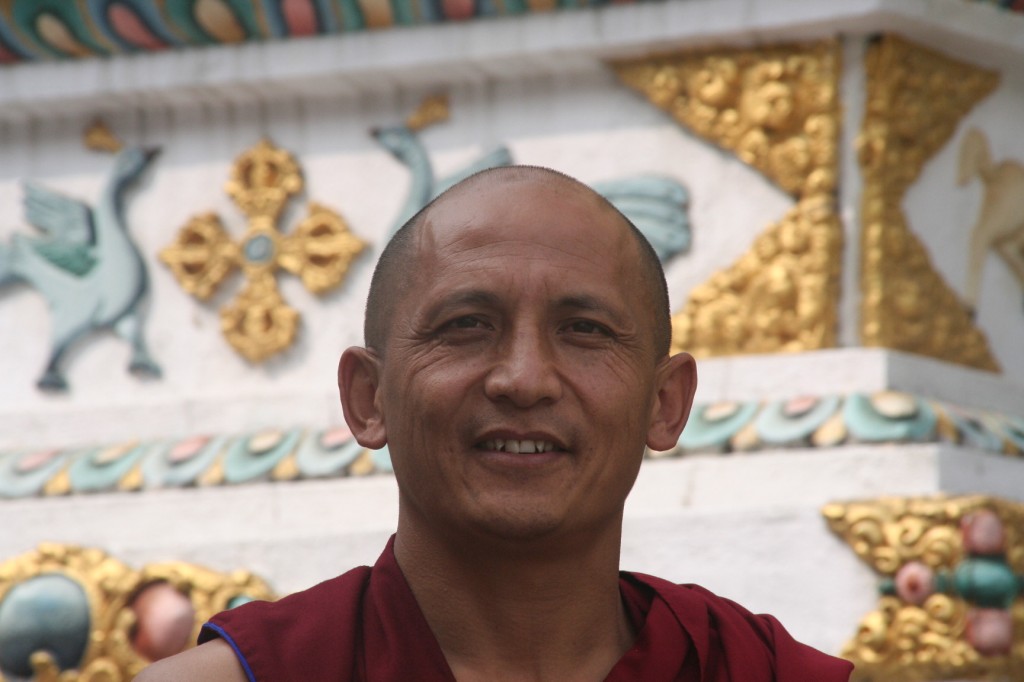Before week four of the class, I want to respond to some great questions about Buddhism and kindness, Buddhist practice, and Buddhist thought.
About Buddhism and kindness: Harold commented on If I Say I’m a Physicist: “for me Buddhism is epitomized by how I treat a grandchild, with a great deal of caring and kindness. Now for some reason as people grow older we stop treating them like we would treat our young grandchildren. Understanding why that happens might bring greater understanding why we have so much conflict in the world.”
Fear distracts us from kindness. Old people are close to what we fear most, death. They remind us that we, too, will die. In societies with a low rate of infant mortality, we think small children are far from death.
Also, small children are vulnerable in an attractive way, not the sad-making way of old people. They develop rapidly in so many ways. It’s easy to help them and forgive their mistakes. But old people change in the opposite way. They grow weaker and make more mistakes. Sara commented beautifully about this, describing an experience with her frail, elderly mother.
And, we tend to be cautious with everyone else, people who are not very young or old, because they might be a threat and they are not so obviously vulnerable.
We can be more kind if we learn to be less fearful and more open to being kind to all, not just ones whose situation makes it easy. Training methods Buddhism offers can help and there are many other programs. It doesn’t matter what method(s) we use to approach the understanding Harold speaks of, only that we do train ourselves to be more kind.
About Buddhist practice: Bill wrote in response to Tibetan Buddhist Class, Week Two: “I didn’t realize there was so much complex ritual. Is this only done during meditation? Is it in this process that one may experience truth or insight? Is this how one learns the teachings of Buddha or how they’re put into practice?”
I wrote a little about ritual practice (sadhana) in Tibetan Buddhist Class, Week Three. There are much more complex and also much simpler ones than we’re learning in this class. This article points out how simple a sadhana can be: “There are three important aspects of sadhana: choice, commitment and aspiration. Even the most simple one will be challenging to the newcomer. Consider lighting a candle every night, then immediately blowing it out. Nothing more or nothing less. Do this for ninety days. You will observe the mind coming up with every reason why you shouldn’t do it and every excuse why you missed a few (or many) nights. Yet by accepting it as a sadhana, you make a choice to do it and it becomes a spiritual practice … Initially, it will challenge the mind and the ego. The spiritual “you” may even win the battle, but to keep it from becoming mechanical, an aspiration is required. Try this. Light the candle and say: ‘This is all I have to do for the benefit of self, other, and the world.’ Then blow out the candle. Doing only that will begin a transformation process that will alter your life.”
One Tibetan teacher I find helpful, Anam Thubten Rinpoche (ATR), teaches only silent meditation, like Zen practice. Sometimes, we just try to watch our thoughts arise – like watching waves roll in and disappear. Other times we try to understand what caused a thought to arise. When I asked ATR: “Could you have attained your realization if you only sat as we do, if you had not practiced the traditional rituals for many years?” He told me: “I had to do that. It was my karma. Different people need to train in different ways.” He believes complex rituals are an obstacle for most Westerners.
Most Tibetan teachers offer more complex practices. All the guides say the same thing, we must each find a practice and a teacher whose methods suit our unique set of thinking and emotional habits (karma). You may recognize your teacher instantly, it could take three years with one before you are sure, it will probably take ten years to absorb what a teacher can point out to you, then you probably need another one.
In a future post I’ll describe a simple tantric Buddhist practice. I understand this one only enough to see why so many tantric practices are held secret. They are paradoxical, intended to disrupt our habitual patterns of thought and emotion. Without guidance from a teacher, we would only form new obscuration. All these methods aim to break down habitual responses to enable more authentic perception and action.
The overall structure of Buddhist practice is: (1) study, (2) reflect and (3) meditate. We learn the teachings via study, understand how they apply to us via reflection, and effect change via meditation. If study is all we do, our behavior will not change. If we try to meditate without study or reflection, maybe our understanding will grow and our behavior will change, but it’s not likely.
About Buddhist thought: John wrote in response to Tibetan Buddhist Class, Week Two: “what would remain if I gradually eliminated all elements of that which forms my awareness of the “world” and of “me” … the “me” that used all my bodily functions to perceive “the world” still seems to “be”.
No “me” exists when I try that thought experiment, perhaps because I interpret “me” to mean a living, sentient being, but more fundamentally because I’m losing the sense that there are any beings or things with a persistent identity.
I am in much the same place as John, however, when he continues: “If this is true of “me” it must be true for all of “us”. What then differentiates “us”? perhaps each physical being has its own perceptions and memories that gives each the perception of individuality, but in reality we may only be ONE.”
Perhaps an analogy is useful. Nepal’s borders have no reality yet they do have real effects. The people and culture on either side of the Indian border are the same, the people and culture on either side of the Tibetan border are also the same, but the cultures of Nepalis close to India or Tibet are different. Plus, it’s all changing. In that way, borders have no reality. But the laws on either side of borders are different and their impact is real.
John’s conclusion is: “The difference from Buddhist thought being that I only tried to imagine what that final state of being would be like, I didn’t actually experience it as some Buddhist gurus claim to do.”
“Buddhist thought” means something different to me now. Phakchok Rinpoche says: “Buddhism is a method, not a belief system.” It is actually a method for discovering and destroying one’s beliefs, a tool not an end product. In other words, if “thought” means “belief”, there is no Buddhist thought. That makes it attractive to someone like me whose habit is to question all beliefs.
I do not hope to attain perfect understanding of Buddhist thought. What I am increasingly confident about is that analytical and intuitive thinking together with chanting, visualizing and other “skillful means” is helpful training for “me” to become more kind to more people. Unlike objectives I set in business, metrics in this sphere have no value. Whatever I achieve will be worthwhile.





